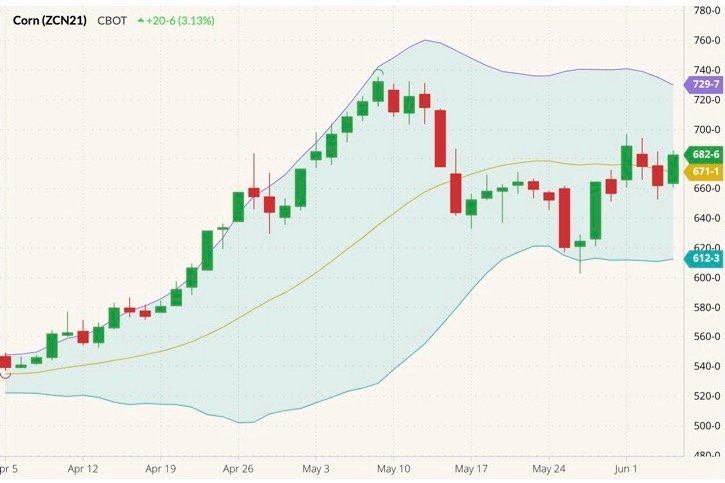Chicago | Reuters — Chicago corn, soybean and wheat futures gained on Friday as hot, dry conditions in parts of the U.S. Midwest threatened yield potential at a time of tight global supply.
The most-active corn contract on the Chicago Board of Trade (CBOT) ended 20-3/4 cents higher at $6.82-3/4 per bushel, gaining four per cent for the week. New-crop December corn added 25 cents to end at $5.91-1/2.
CBOT soybeans gained 34-1/2 cents to $15.83-3/4 per bushel, increasing 3.48 per cent for the week. New-crop November soybeans added 32 cents to $14.35-1/2.
Read Also

Alberta crop conditions improve: report
Varied precipitation and warm temperatures were generally beneficial for crop development across Alberta during the week ended July 8, according to the latest provincial crop report released July 11.
CBOT wheat gained 11-1/2 cents to $6.87-3/4 per bushel, a 3.65 per cent gain for the week.
Tightening global availability, linked to strong Chinese imports and deteriorating prospects for Brazil’s upcoming corn harvest, have made grain markets sensitive to fluctuating U.S. weather forecasts.
“You’re going to need a record-type yield for both beans and corn. The current forecast is clearly not helpful,” said Terry Roggensack, Agriculture research specialist at Hightower Report.
Private analytics firm IHS Markit Agribusiness lowered its estimate of Brazil’s 2020-21 total corn crop to 88 million tonnes, down fuve million from its previous estimate, according to an IHS client note seen by Reuters.
However, late-planted corn in Argentina, another major exporter, is delivering higher-than-expected yields, the Buenos Aires Grains Exchange said on Thursday.
U.S. corn and soybean yields could be hurt by hot and dry conditions in a year where supply is already slim, said Charlie Sernatinger, Global Head of Grain Futures at ED+F Man Capital.
“It’s not crucial at all for the development of the plant,” he said. “But this is a year when we need a trendline yield in order to break even for new crop ending stocks.”
U.S. corn export sales of 970,500 tonnes gained for the week ended May 27, compared with the prior four weeks, according to the U.S. Department of Agriculture. Corn exports of 2.2 million tonnes were up 15 per cent from the week prior and nine per cent higher than the previous four weeks.
U.S. soybean export sales of 198,000 tonnes were down significantly from the previous four-week average, according to USDA. Exports of 221,700 tonnes were at a marketing-year low.
Parched conditions for U.S. spring wheat contrast with generally favourable conditions for wheat in Europe and the Black Sea region.
U.S. wheat export sales eased to 365,100 tonnes, down from the previous four weeks, according to the USDA. Shipments of 243,200 tonnes were down 56 per cent from the prior four-week average.
— Reporting for Reuters by Christopher Walljasper; additional reporting by Gus Trompiz in Paris and Naveen Thukral in Singapore.


















